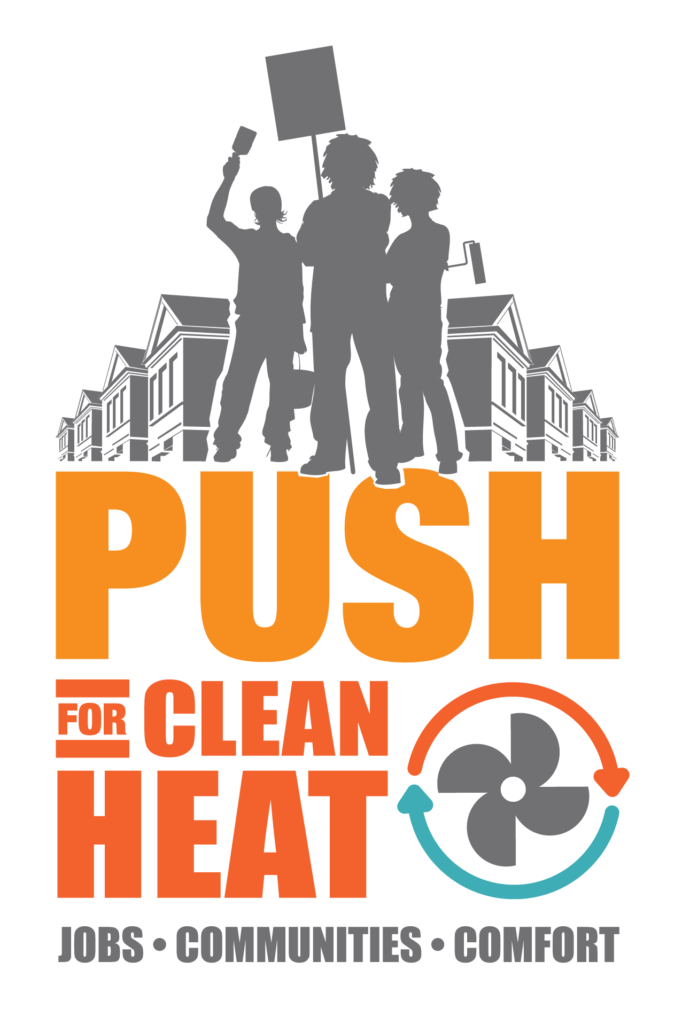What are Ground Source Heat Pumps?
Ground source heat pumps can work two ways: transferring heat from the ground to forced air (through ductwork or a mini-split), or transferring heat from the ground to water, providing hot water for radiators throughout the house. Ground to air heat pumps can also provide cooling in the summer. They are the least costly/more efficient heat pump to run because they use the earth’s constant temperature, 40-42°F, as a basis for heating and cooling.
Ground Source Heat Pumps (GSHP) are installed typically installed in two ways, vertical loops or horizontal loops. Vertical loops go deeper into the ground but take up less space outdoors. Horizontal loops do not go as deep but take up more outdoor space during the digging process.
After digging for either a horizontal or vertical loop, tubing is installed with a mix of antifreeze and water. This water and antifreeze mixture is pumped through the loops, absorbing some of the heat energy in the ground. It then passes a heat exchanger, where it transfers heat from the heat exchanger to the refrigerant loop inside of the house. The refrigerant reaches its boiling point and this heat is distributed into the home. If you have a forced air system, either ducted or ductless, the heat is dispersed by a fan blowing over the coils. If you are using the ground source heat pump to heat up water, either for use or space heating, this heat is transferred to the water.
Need help determining the heat pump system that might be best for your home?
The New York State Energy Research and Development Authority (NYSERDA) has developed the Heat Pump Planner tool to help you learn more about heat pump technology, the types available, installation and operation costs, and questions to ask an installer.
How it Works: Ground Source Heat Pumps (2:01)
Courtesy of New York State Energy Research & Development Authority (NYSERDA)
Frequently Asked Questions
- Heat pumps don’t work in cold climates – This used to be the case, but the technology has advanced, and our knowledge of heat pumps has advanced as well. With any new technology, there were kinks to work out. These kinks resulted in a lot of lessons learned from the 80s and 90s which provide much better installations today.
- If I can’t just swap it with my existing system, its not worth it. – Many homes have comfort issues – rooms that get too hot or too cold, or maybe there are cold spots in your house. With the cost of gas being so low, and the ability of a gas furnace to pump out hot air quickly, many homeowners were able to ignore these uncomfortable spots in their house. By pairing heat pumps with insulation installation or upgrades, as well as air sealing, your home should feel more comfortable and your home will lose less heat. Preventing heat loss is a major part of energy efficiency.
- Heat pumps blow cold air – This was an issue with earlier versions of heat pumps. Variable speed fans, improved technology with the controls and higher heating capacity has improved this problem.
- The cost of heat pumps has been coming down over the years. This is in part driven by increased demand and technology improvements. Incentives have gotten better as well.
- Ground source heat pumps have a much higher upfront cost. However, the system’s life cycle is at least double of and air source heat pump, gas furnace or boiler.
- Depending on the system you install, and if the distribution system is a forced air system, then the system can also provide cooling, which is an added benefit.
- Ground source heat pumps can also be set up to provide hot water.
- High upfront cost is still a large barrier for ground source heat pump installation on the residential level.
- Ground source heat pumps use less energy than air source heat pumps, so they cost less to run.
The life cycle of all types of equipment depends on many factors including the brand, installation and maintenance. Generally, air source heat pumps have a life cycle of 15-25 years. For ground source heat pumps, the life cycle of the indoor unit is roughly 20 years. For the in-ground portion of the system, the lifecycle is at least 50-100 years.
- Clean the indoor filter every 2-6 weeks, if the distribution system is forced air. The frequency depends on what goes on in your home, including the presence of pets, smoke, and dust. NEEP provides a great consumer resource that includes maintenance.
- As with furnaces and other heating equipment, refer to the manufacturers’ recommendations for scheduled maintenance checks by a professional.
When a heat pump is paired with a solar system, it allows that solar system to help provide power for your heat system and can reduce your regular utility bills. You still will have to pay at least the monthly service fee, even if your system generates more power than it uses.
Ground source heat pumps will continue to operate efficiently when it is cold outside. The outdoor, underground loop uses the earth’s temperature as a basis to provide heating and/or cooling. The earth’s temperature is constant even when it is cold outside.
More people are beginning to install heat pumps as the sole source of heat for their home, and if you do so, this may increase your incentive. Ground source heat pumps use the earth’s temperature to provide heating or cooling. Since this temperature is steady, ground source heat pumps are not typically installed with a backup heating system. One thing to consider, does your currently heating system have a backup?
You can install a heat pump in an old house, but it is especially important to make sure you have a well-insulated and air sealed house. Installing a heat pump in an uninsulated or poorly insulated house with old windows will not provide the heating needed or cost savings. One thing to consider is your distribution system. If you have a hydronic system, or a system that circulates hot water below the floor or to radiators, you will need to look into ground source heat pumps or consider not using the existing distribution system. If you have a house without ducts, a ductless system is a great option for distribution.
A load calculation, often called a Manual J (this is a specific type of load calculation) is a software program that your installer can use, or sometimes hires someone to complete. Many of the factors that affect heat use in your home are inputted, including insulation levels, square footage, ceiling heights, type and square footage of windows, doors, and air leakage, to name a few. Using information about the specific climate you live in; the software makes a recommendation for the capacity of the system. It may be an additional fee to have this completed, but it is important to make sure that the system you install will work in your home.
Warranties vary by manufacturer but is similar to other heating systems. The cost of regular servicing will vary by technician or company, but is similar to other heating systems.

